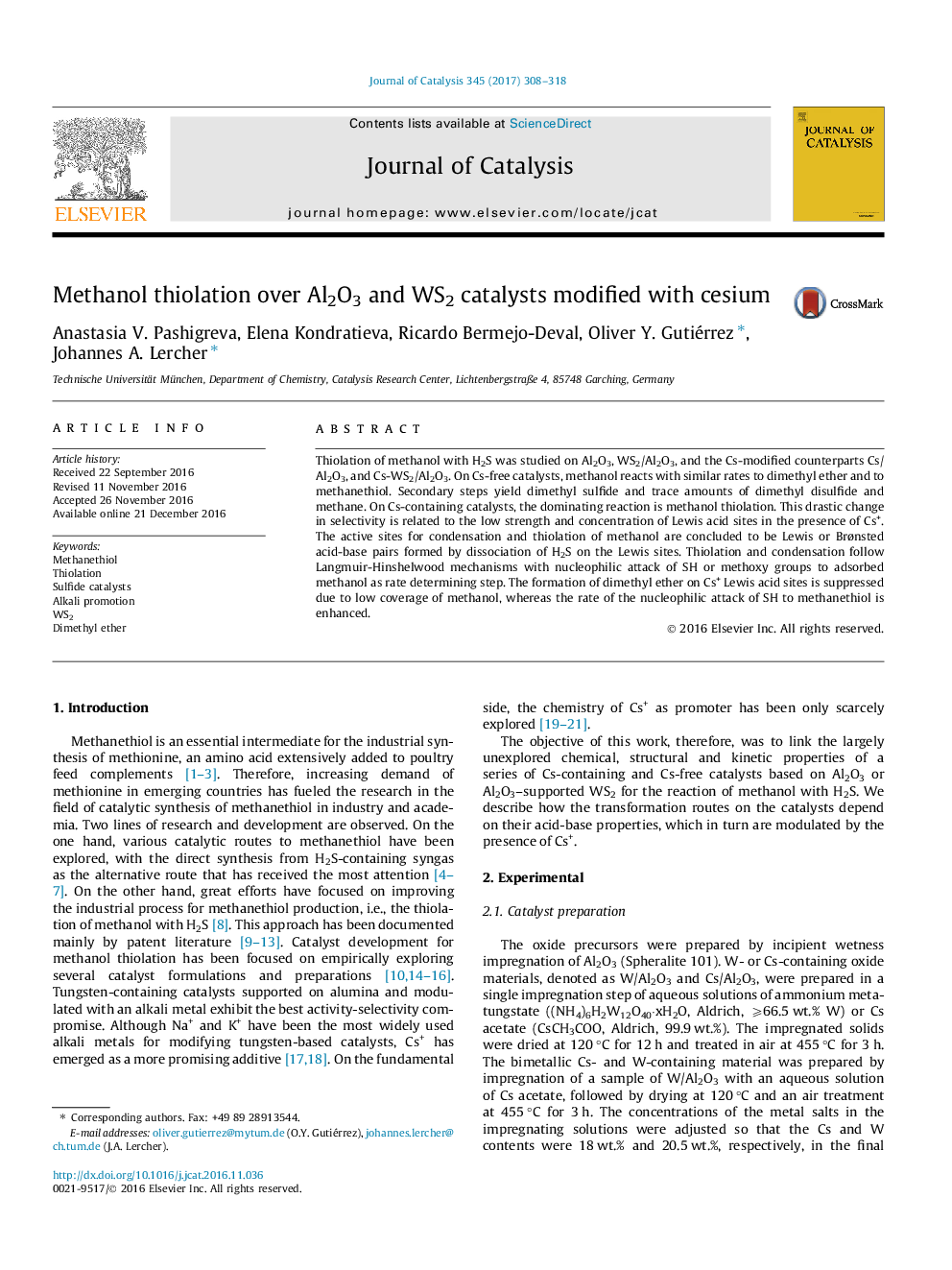| Article ID | Journal | Published Year | Pages | File Type |
|---|---|---|---|---|
| 6455683 | Journal of Catalysis | 2017 | 11 Pages |
â¢Reactions of methanol and H2S over Al2O3 and WS2/Al2O3 with or without Cs+.â¢Dimethyl ether and methanethiol form on strong acid sites of the Cs+-free catalysts.â¢Reactions follow bimolecular Langmuir-Hinshelwood (SN2) mechanisms.â¢Strong acid sites of the parent materials are replaced by Cs+ with weak acidity.â¢Cs+ sites only catalyze methanol thiolation to methanethiol suppressing side reactions.
Thiolation of methanol with H2S was studied on Al2O3, WS2/Al2O3, and the Cs-modified counterparts Cs/Al2O3, and Cs-WS2/Al2O3. On Cs-free catalysts, methanol reacts with similar rates to dimethyl ether and to methanethiol. Secondary steps yield dimethyl sulfide and trace amounts of dimethyl disulfide and methane. On Cs-containing catalysts, the dominating reaction is methanol thiolation. This drastic change in selectivity is related to the low strength and concentration of Lewis acid sites in the presence of Cs+. The active sites for condensation and thiolation of methanol are concluded to be Lewis or Brønsted acid-base pairs formed by dissociation of H2S on the Lewis sites. Thiolation and condensation follow Langmuir-Hinshelwood mechanisms with nucleophilic attack of SH or methoxy groups to adsorbed methanol as rate determining step. The formation of dimethyl ether on Cs+ Lewis acid sites is suppressed due to low coverage of methanol, whereas the rate of the nucleophilic attack of SH to methanethiol is enhanced.
Graphical abstractDownload high-res image (148KB)Download full-size image
